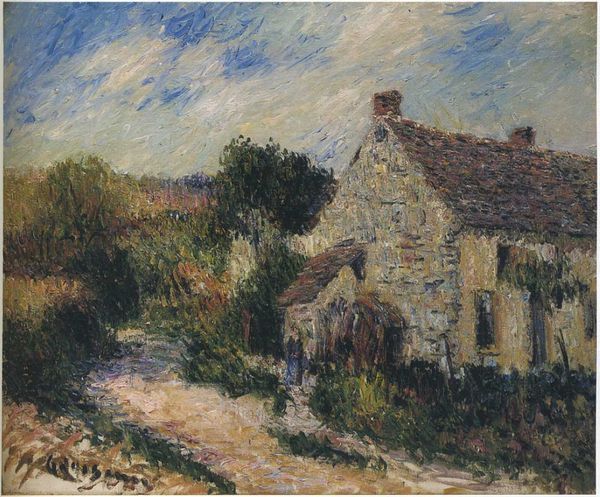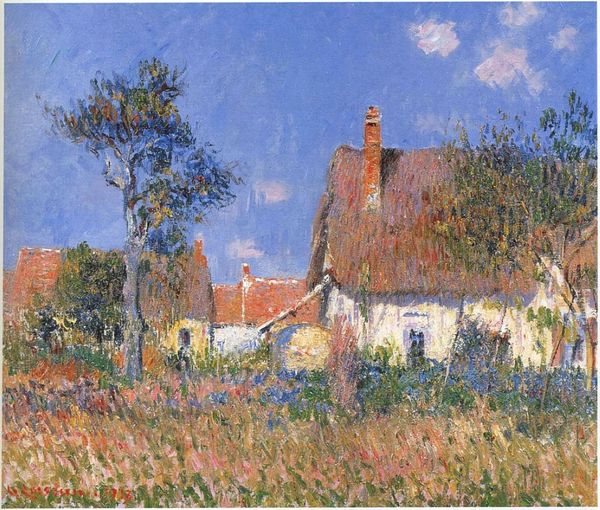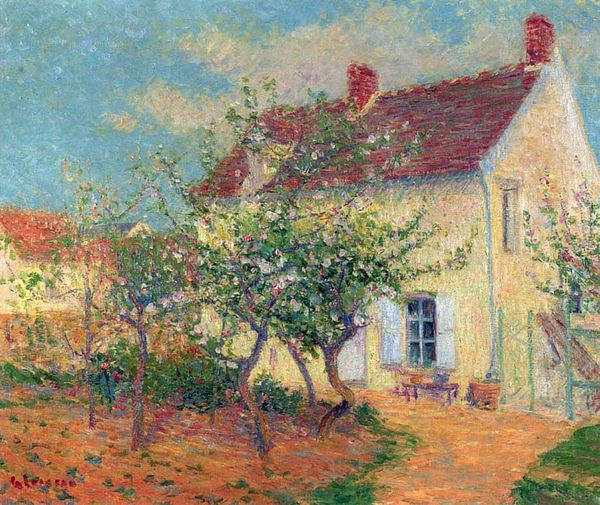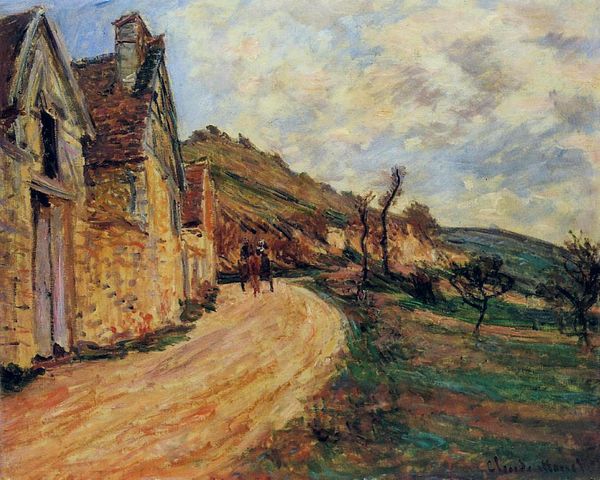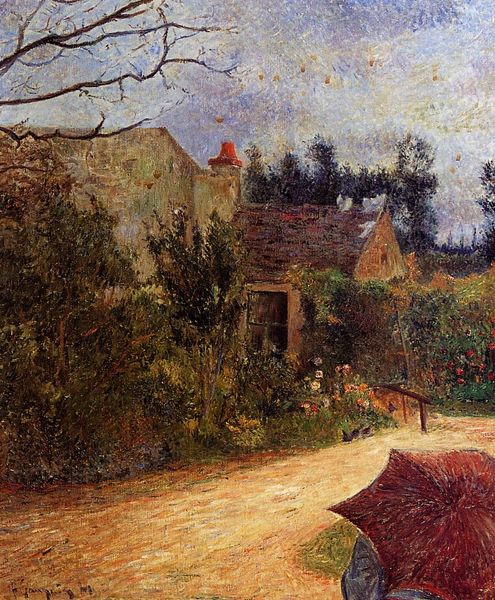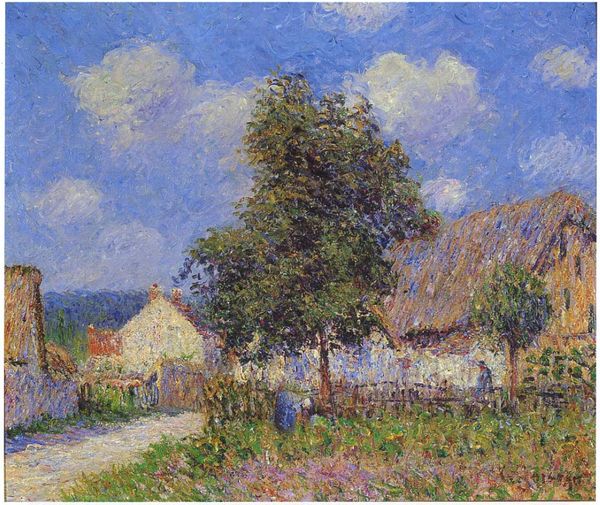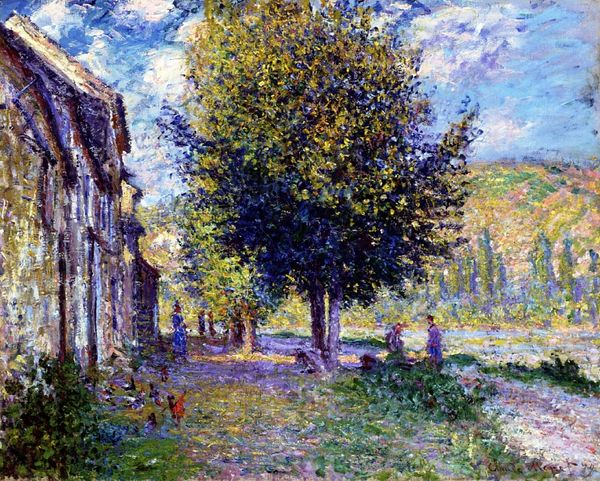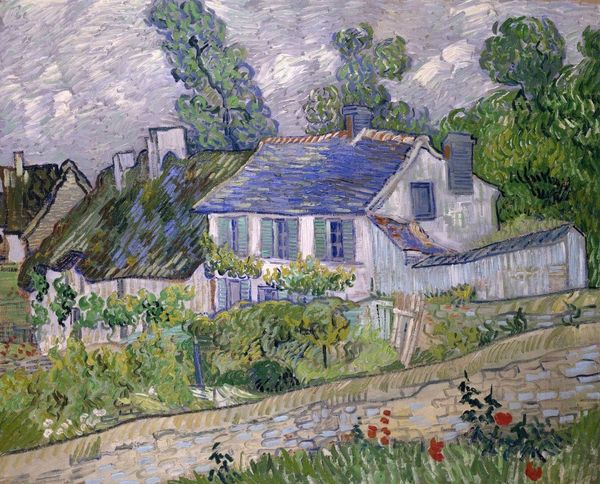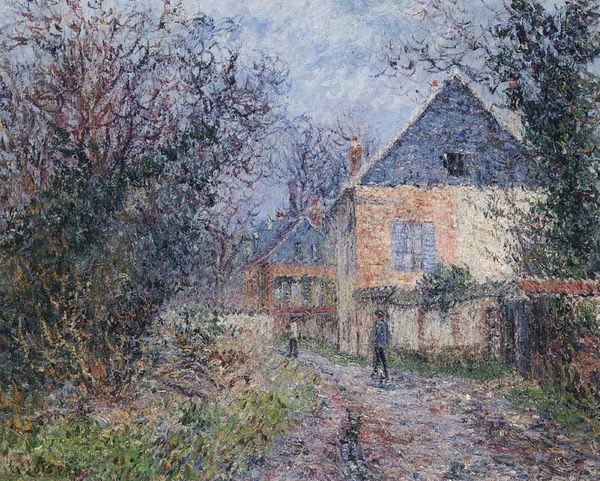
Dimensions: 50.5 x 61.2 cm
Copyright: Public domain
Editor: So, here we have Gustave Loiseau’s "Landscape of Seine et Oise," painted in 1906. The scene, rendered in oil, shows a charming rural view. I'm struck by how the light catches the side of the house; it’s almost as if the structure is glowing from within. What compositional elements do you find most compelling? Curator: Observe the systematic brushstrokes that structure this canvas. Note the way Loiseau uses short, distinct strokes to build up forms – the house, the trees, even the sky. These strokes are not merely descriptive; they function almost as a visual code. It becomes clear that texture itself plays a significant role. How do you think this technique impacts the reading of depth within the landscape? Editor: I see what you mean about depth – it's like the artist is less interested in creating a perfect illusion and more focused on the surface quality of the paint itself. So the trees in the background seem as close as the house, not because of perspective but through the paint. It is very interesting. Do the colors speak in any way? Curator: Consider the restricted palette, dominated by earth tones, creams, and greens. Loiseau modulates these colours subtly, generating luminosity. However, this isn't about faithful reproduction; instead, Loiseau evokes a mood. The house becomes an interplay of tone and shade, almost a deconstruction of form through color. What does the subdued palette say to you? Editor: That's fascinating. It’s like the painting itself becomes the subject, not just the scene it depicts. So, looking again, Loiseau prioritized conveying texture and light over accurately depicting details or reality. Thank you so much for helping me with the analysis! Curator: Indeed, it's about the translation of visual experience into a formal arrangement. A careful attention to the inherent qualities becomes more fulfilling than finding direct resemblances. This analysis emphasizes what the painter intended with forms and materiality.
Comments
No comments
Be the first to comment and join the conversation on the ultimate creative platform.
